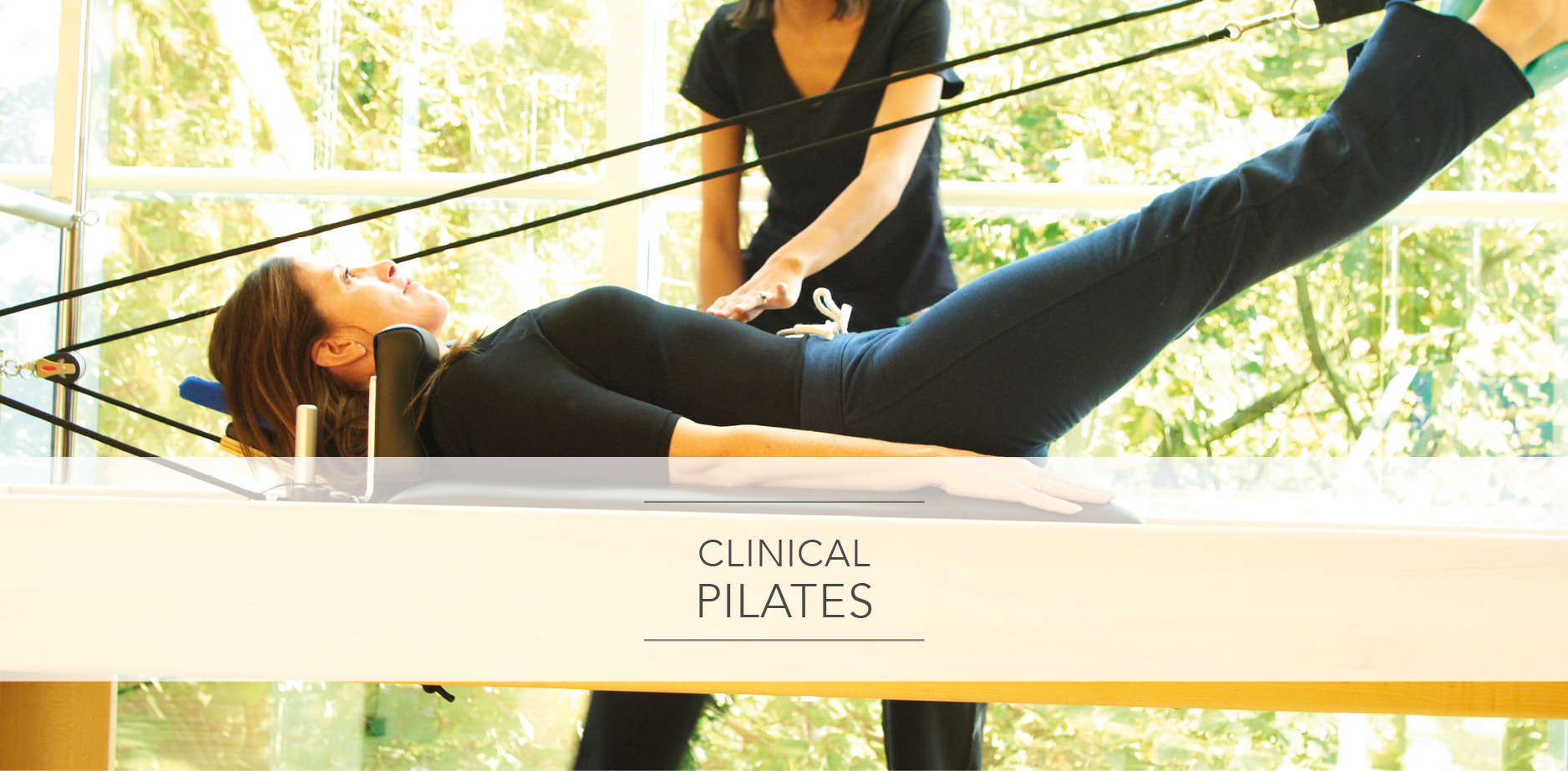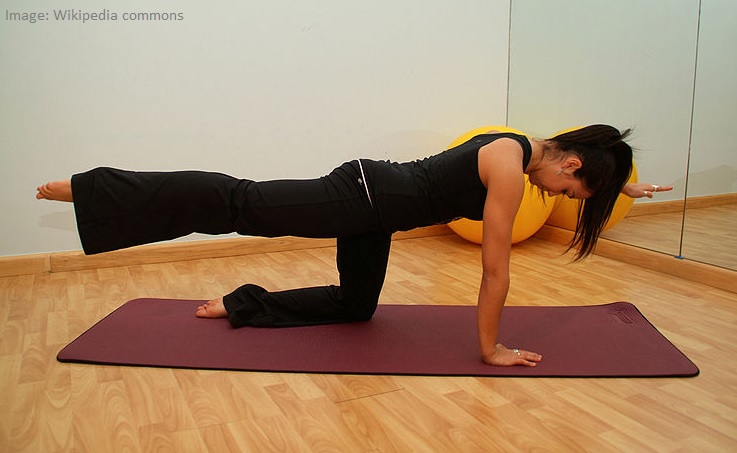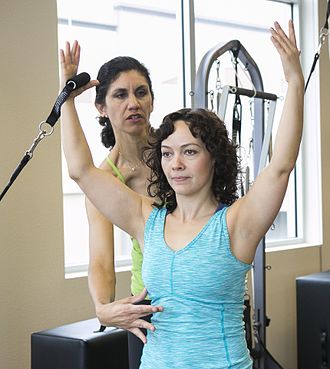nalco group
bone, muscle & joint pain physio
BOOK NOW / WHATSAPP ABOUT YOUR PAIN OR INJURY
- NOVENA 10 Sinaran Drive, Novena Medical Center #10-09, Singapore 307506
- TAMPINES 9 Tampines Grande #01-20 Singapore 528735
- SERANGOON 265 Serangoon Central Drive #04-269 Singapore 550265
Home > Blog > Physiotherapy > Clinical Pilates > Conditions
Clinical Pilates and Physiotherapy

What is Pilates?
To understand clinical Pilates, we first need to understand what is Pilates.
Pilates is a very specific and unique body conditioning exercise method that is created specifically to re-balance our body and to bring our body into correct neutral alignment by targeting deep postural muscles (such as the transverse abdominals and muscles of the pelvis).
At its core, what Pilates does is that focuses specificly on our core muscles and core muscles strength, focusing to build straight and stamina right at our core first, then with additional benefits of:
Pilates balances strength and flexibility components very well.
Today, Pilates is definitely a growing practice amongst the everyday people, celebrities and athletes, and is rapidly onboaded specificly for the management and treatment of orthopedic, sports and musculoskeletal rehab.
What is Clinical Pilates?
Clinical Pilates refers to the modification of Pilates by physiotherapists by combining the fundamentals of Pilates (as well as Pilates treatments) with physiotherapy research and education with particular emphasis of activating, strengthening and improving the flexibility of our core muscles.
This is done for post-injury physiotherapy (rehabilitation), preventative to prevent injuries (prehabilitation) as well as improve performance (strong core = stable/strong movements).
Clinical Pilates is a perfect complement to physiotherapy and rehabilitation.
CLINICAl pilates Background
Pilates was created and discovered in Germany in early 20th century by Joseph Pilates.
He was a very active sportsman, and participates in sports including:
...but interestingly, Joseph spent most of his young/childhood struggling against asthma, rickets and even rheumatic fever.
It was struggling against these health problems and wanting to improve that led him to study different health pursuits and disciplines such as yoga, which he then used collective to create a combined movement and exercise called Pilates.
During the war, he practiced his exercise method, even became actively involved with physical therapy and rehabilitation of war-related injuries patients.
Once the war ended, the moved to New York and opened the first Pilates studio then, treating athletes, actors, dancers and more.
Clinical Pilates vs Pilates
Clinical Pilates is used primarily to treat people with musculoskeletal, orthopedic or sports injuries (basically, injuries to the bones, joints, muscles, ligaments etc), and is done by an experienced physiotherapist who is certified with a Clinical Pilates certification.
If someone gets injured from a physical trauma or from repetitive strain, what usually happens is that they will experience
Those are the items that needs to be treated FIRST before embarking on Pilates (this is the reason why physiotherapy and pilates complements each other so well).
You see, sometimes, some Pilates movement/exercises may cause or even aggravate one's pains.
A specifc example is a person who presents low back strain and pain. Low back pain is usually caused by over-extension in the lower back.
Such patients may have more pronounced lordosis and hence shouldn't be prescribed with extension pilates exercises.
This is something is will not be picked up if a person attends a standard routine Pilates class, which combines both flexion and extension exercises.
It’s not only vital to select the right type of Pilates exercise that right for your injury and health, it is also important to ensure that the correct and appropriate level of Pilates is prescribed.
Standardised and routine pilates is more often than not, likely too difficult for a person with an existing back pain – back pain will cause weakness and pains that will likely cause the client to compensate and use their stronger unaffected muscles as opposed to their core muscles, effectively distilling the benefits of Pilates (and even cause MORE pain).
On top of that, the patient may experience muscle spasm in the more-used unaffected muscles due to the increased exertion.
What our senior physiotherapists will do is that they will first test your muscle strength and range of movement, understand your pain history, injuries, goals, and more BEFORE starting you on any Pilates to ensure that the exercises are appropriate and just-right the challenge that is helpful for recovery.
Another benefit of Clinical Pilates over the standard routine Pilates is is more customized to individuals and their specific conditions, and at the same time, it is also more functional.
An example if the client is unable to participate in their favorite sport or activity such as playing soccer, dancing or even boxing, the physiotherapist can then modify Clinical Pilates exercises prescribed to strengthen the core muscles as they execute the movement in the particular sports/activities that aggravates the problem.
This
means that the core muscles of a football player is challenged as he kicks and
dribbles the football, and not just in static postures; the dancer as he/she dances/changes positions and postures; and the boxer as he/she moves in/out whilst taking or giving hits.

Peripheral injuries
Peripheral injuries refer to non-spine/non-back/non-neck injuries, and they include, shoulders, upper limbs, hips, knees, ankle, feet etc.
When our senior physiotherapists manage and treats peripheral joints and/or muscular injuries such as wrist or ankle instabilities, we will almost always focus on the injured joint/body part.
This makes sound and direct clinical sense and is a good place to start for physiotherapy and gradually progressing to works/exercises designed to improve strength and stability.
That being said, clinical research is beginning to show that physiotherapy and rehab also needs to take a macro/large-view of the injury; that improving a client’s dynamic control of their movements will likely lead to less injuries in the mid to long term.
There is a growing movement to rehabilitate athletes and clients coupling complementary pilates-based exercises to teach them how to move more efficiently.
Pilates is commonly used to also treat injuries to the
- back and neck injuries, as well as
- ankles pain and sprains
- knee pain
- hip pain
- groin pain
- women's health such as diastasis
- shoulder pain
- elbow pain
- and more
Spinal Injuries and Back / Neck Pain
An effective way to manage and treat back pain is to combine:
Research shows that back pain often causes a decrease mobility and function of the multifidus which is a deep deep spine muscle, at the location/level of the injury.
What happens is then these muscles become inconsistent/unable to "activate" themselves as and when it's required to be used.
That's why if the pain and problem was unresolved OR resolved with superficial management (ie didn't treat the main problem), the multifidus muscle will continue to shrink due to prolonged non-use, and this just leads to more recurring back pain as our back tries to compensate for the weakened muscle by using other muscles...
...and hence other muscles get overworked and over-tight and you get secondary spasms, and yet the multifidus problem just worsens.
The multifidus muscle will need very specific and very trained senior physiotherapists with background in clinical pilates to trigger, activate and strengthen it again, and as we work on it, it will increase the strength, stamina and stability of our back.
Back injuries unfortunately not only cause pain, weaknesses, fear of movement...but worse, they tend to recur again and again...especially when we do things with bad postures, sudden movements or just out of the blue.
Clinical pilates strengthens the deep back and neck muscles to prevent back pain from recurring BUT we must treat the back and neck problems FIRST.
As our senior physiotherapists work on the back and neck tissues, apply clinical pilates treatment techniques and educate patients on spine neutrality, patient will gradually feel, know and use their stronger backs, as they become increasingly aware of what good posture is.
For mid to long term, with ongoing clinical pilates for rehab and fitness, our patients will also develop a combination of
If the patient is new to Pilates, no issues because we ONLY do 1-to-1, never a generalized pilates class that doesn't cater to the individual patient or client.
The benefits of this includes
Pilates can get challenging and it is so easy to make mistakes, that's why it's important for close management and supervision to ensure the correct movement patterns is learnt (and to prevent learning the wrong ones or cause injuries from doing the wrong moves).

Pilates teacher using verbal and tactile feedback to ensure proper form
Benefits of Clinical Pilates
Which clients would benefit from Clinical Pilates?
Clinical Pilates is very specific to target:
Our senior physiotherapists will
- perform an indepth assessment which may include pain and injury history, perform clinical and movement tests
- understand and identify your posture, understand your injury
causes, as well as find out your specific motivation and reasons what you're aiming to
return to (e.g. wanting to return to a specific sport or activity) and then we will plan and implement customized-to-you specific exercises that are more functional and beneficial to you
That also means that clinical pilates treats will not manage and treat the cause of the injury but we will also be able prescribe very customized-to-you exercises to strengthen the injured/weakened structures, on top of a “general” perspective of management for injury prevention in the long run.
If you know
someone who has been suffering from back pain, neck pain or
peripheral injuries such as pain in their shoulder, knees and ankles, and these injuries seem to be recurring - then they may
just need clinical pilates with our senior physiotherapists.
